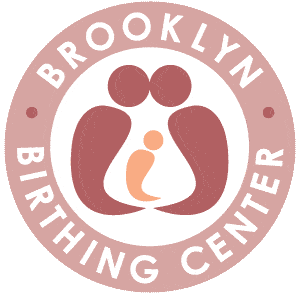A post by Sheila Olson
You’ve got big energy needs when you’re pregnant—from carrying new life to adjusting to hormonal waves—and simple moments of reset can change everything. In the bustle of prenatal appointments and nesting logic, your body craves pockets of calm. Think of breathing exercises as a subtle tune-up: just a few conscious inhales and exhales can shift nerves, blood flow, stress hormones. When you add in relaxation routines and mindful boosts, your energy system starts to work smarter. You don’t need grand gestures—tiny pauses can unpack tension and restore presence.
Breathing Basics
Start from deep belly breathing to calm nerves while seated or lying down. Rooting your breath into the diaphragm helps increase oxygen to both you and your baby, reduces tension hormones, and invites a slower rhythm into your system. Expect to feel your belly rise more than your chest. That simple practice has ripple effects—lower heart rate, steadier nerves, clearer headspace. A few rounds of this each day can become an anchor when the day feels crowded. Think of it as grounding energy before you leap into more complex moves.
Cultivate an Arsenal of Stress Management Strategies
When you’re managing daily overwhelm, learning how to relieve stress becomes a game‑changer. You might discover how structured routines or external support can soothe tension and help regulate energy. These frameworks often combine practical pacing, prioritization, and targeted relaxation to ease the load. By anchoring emotional safety into your day—through support systems and clear strategies—you reinforce the breathing and mind‑body work you’re doing. That external structure makes your internal reset more sustainable. Ultimately, combining both gives you more consistent capacity to feel present and centered.
Rhythmic Balance Breaths
Try syncing rhythmical breaths for energy: inhale for a count of four, pause for two, exhale for six. That slower exhale invites your parasympathetic nervous system to switch on—balancing energy rather than depleting it. Many find this pattern keeps them alert without tension, a soft reset in mid‑afternoon fatigue dips. It also gently nudges pelvic floor engagement and core stability when done with intent. A few slow cycles can feel like digestion for your nervous system—easy yet powerful. Tuck this into transitions, like after breakfast or before starting chores.
Gentle Relaxation Techniques
A progressive muscle relaxation session can melt stored tension. Start at your toes and work upward—clench a group of muscles, hold, then release with your breath. That marshals both body and breath to sync with calm. As each group loosens, your brain registers safety and lets stress signals fade. Regular practice—even just once a day—can ease aches, lull anxiety, and support better sleep later. You’ll carry forward a soft edge of ease that helps you stay grounded through unpredictable days.
Visualization Benefits
There’s power in visualizing outcomes to ease anxiety: picture soft light at the end of a tunnel or warm sun on a quiet beach. Modern cognitive‑behavioral therapies show that sensory-rich imagining can reshape emotional response and shift mindset toward composure. Daydream about exerting calm, focused energy—you’re not escaping; you’re retraining neural patterns toward peace. This mental rehearsal supports resilience in emotional storms, giving your nervous system invitations to stay steady. Even short imagining sessions can feel like a mini‑vacation for your mind and nervous structure.
Energy‑Boost Breath Patterns
Interject quick energized inhalations for vitality when you need an alertness lift—not caffeine, just focused breath. Try three sharp inhales through the nose, each followed by an easy exhale. That resets your alertness without overstimulating strain. Follow it immediately by deep belly breaths or a light stretch to integrate the wakeful surge. This ritual can sharpen focus before a to‑do or clear the fog after a nap. It’s short, punchy, and perfect for moments when you feel dulled rather than drained.
Mindfulness for Daily Recharge
Integrating daily mindfulness to reduce fatigue means weaving presence into routine: pay close attention to sensations during simple tasks—like the pressure of your feet during a pause or the warmth of tea on your lips. This posture of noticing slows down runaway thinking and recharges awareness in pauses you already take. A quick body scan of tension zones and breath can serve as micro-recovery breaks. With repetition, these moments gather to add clarity and resilience throughout the day. This helps divert stress loops before they escalate into overwhelm.
Encourage Movement Pauses
Little movement breaks are underrated energy reinforcements. Stand, stretch your shoulders, roll your knees, or walk slowly for one minute. That stimulates circulation, resets posture, and complements breathwork by feeding fresh oxygen into your system. Pair movement with deep inhalations and smooth exhalations, and you create a ritual of reset. These pauses sharpen alertness without spikes of tension. Scattering five‑minute resets through your day can build steady energy layers rather than sharp peaks and valleys.
By weaving in deep belly breathing, patterned rhythm breaths, progressive muscle relaxation, visualization exercises, and short energized inhalations, you craft real opportunities to restore calm and clarity during pregnancy. Pairing these techniques with daily mindfulness moments and mini movement breaks supports a rhythm of energy that’s sustainable, not forced. You learn to move within the day with softness, awareness, and intention. Resistance melts when these techniques become natural plugs in your routine. Before long, your system starts defaulting to reset rather than threading tension. You get to feel more present, more peaceful, and more energized.
Discover personalized and compassionate care at the Brooklyn Birthing Center, the only freestanding birth center licensed in metro New York, and join our upcoming orientations to learn more!
